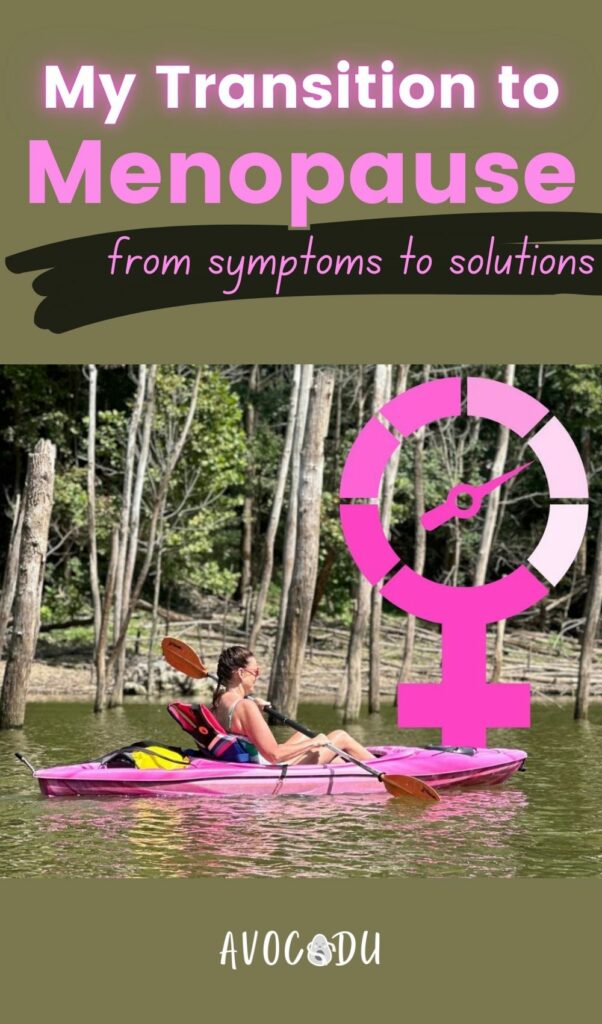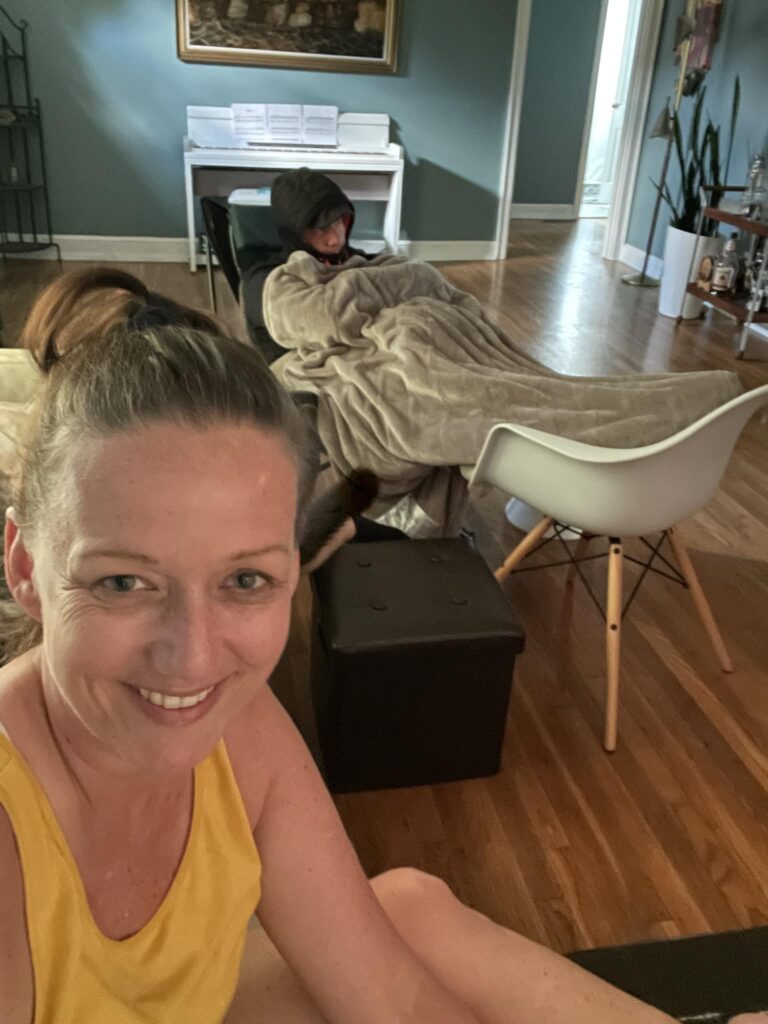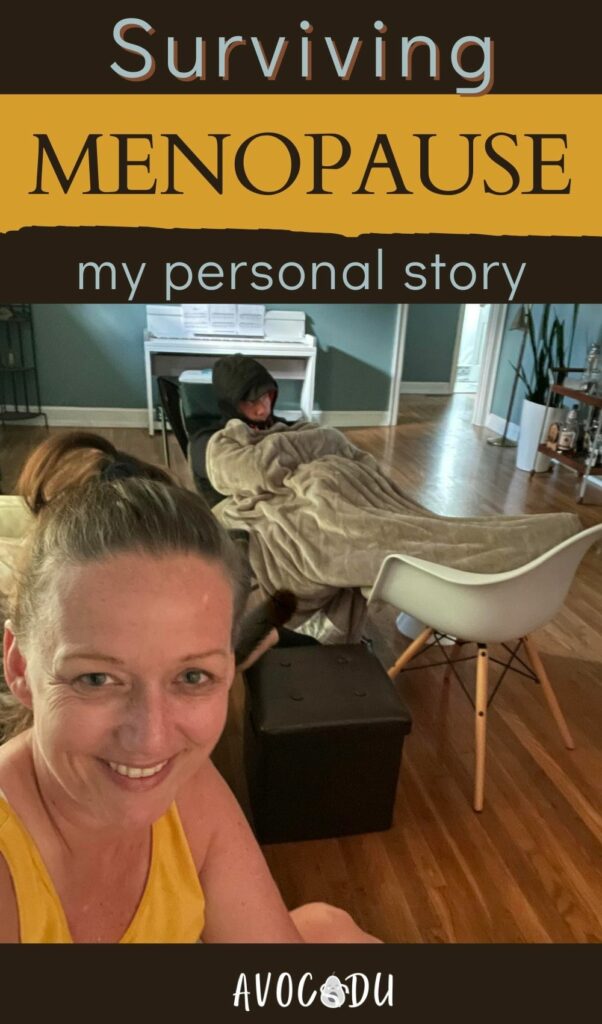Surviving Menopause: How I Managed Intense Symptoms and Found Balance
Menopause. If anyone had told me just how unpredictable and relentless it could be, I might have laughed—or maybe cried!
My journey into this hormonal rollercoaster started quietly in my early 40s, like a sneaky little whisper that things were about to get interesting.
Fast forward to now, nearly 50, and let me tell you, it’s been a ride! Hot flashes, mood swings, sleepless nights—you name it, I’ve been there.
But along the way, I learned a few things that made the whole experience a bit less overwhelming.
From learning to advocate for myself to finding doctors who really got it, I found a path that helped me stay (mostly) sane through it all.
So, here’s my story—complete with the good, the bad, and the downright sweaty. But before we jump in, let’s quickly look at the stages of menopause to set the scene:
- Perimenopause: The transitional phase leading up to menopause, often lasting several years. During this time, hormone levels fluctuate, leading to symptoms like irregular periods, hot flashes, and mood changes.
- Menopause: Officially marked after 12 consecutive months without a period. This stage signals the end of menstrual cycles, typically occurring around age 50, as the body’s hormone production shifts significantly.
- Post-Menopause: The period following menopause, when symptoms may gradually ease for some women. However, there can be longer-term changes in health and hormone balance to be aware of, such as bone density or heart health.

This post may contain affiliate links, which helps keep this content free. Please read our disclosure for more info.
Recognizing the Onset of Perimenopause
The early signs were subtle, but they sure got my attention. My menstrual cycle, which had always been so reliable I could set my calendar to it, decided it was time for a shake-up.
At first, my periods started sneaking in a little early, arriving every three weeks instead of four. Not exactly convenient, but manageable—until they decided to crank it up to every two weeks.
Yes, two weeks! Imagine barely getting over one period before the next one was knocking on the door.
It was exhausting, inconvenient, and honestly just unfair. I felt like I was caught in some cruel cycle lottery, with my body choosing random intervals on a whim.
And this unpredictability didn’t go away quickly. For about two years, I was stuck in this erratic rhythm, with cycles that could arrive anywhere between two to four weeks apart.
Some months, I’d be at the mercy of a short two-week cycle; other months, I’d get a small break with four weeks in between. But any sense of normalcy was out the window, and I never knew what to expect.
Then, just as suddenly as it had shortened, my cycle started stretching out into long, mysterious absences—two months, sometimes even longer, leaving me constantly guessing.
It was like my body had given up on any kind of regular plan, and I was just along for the ride!
This wasn’t just a little change—it was the opening act to a whole new stage of life, one with symptoms that made it very clear I was heading into perimenopause.
If my cycle was unpredictable, as it turned out, so was everything else! And this was only the beginning.
Managing and Coping with Symptoms of Permimenopause

Perimenopause brings more than unpredictable periods. Every part of your life gets dragged into the experience, with new surprises popping up just when you think you’ve figured it out.
Here’s how I tried to manage each of these lovely “gifts” of perimenopause.
Sleep Disruptions and Insomnia
Insomnia quickly became one of the biggest challenges I faced. Sleeping past 5 a.m. turned into a luxury I rarely got to enjoy.
Most nights, I was lucky if I scraped together four hours, but even that sleep was interrupted by constant wake-ups. Sometimes, I’d lie there for an hour or more, wide awake in the middle of the night, wondering if I’d ever know what a full night’s sleep felt like again.
Trying to get through daily life on broken, minimal sleep was a struggle, to say the least. It felt like my body was working against me, making everything a little harder and definitely more exhausting.
Related article: The Connection between Quality Sleep and Weight Loss
Hot Flashes and Night Sweats
What started as mild night sweats quickly escalated into full-on hot flashes that hit at all hours of the day.
I went from tossing off blankets at night to fanning myself during the day, trying to get some relief.
And “hot flash” doesn’t quite capture the reality—it felt more like I had the core of the sun radiating out from deep inside me.
This wasn’t just being hot because of a warm room or the weather; this was an intense, internal heat that seemed to flare up from my core, completely out of sync with anything going on around me.
At their peak, I was getting three to four flashes every hour, and the intensity was enough to leave me feeling out of breath and panicked.
With these flashes hitting constantly, it felt like my body’s thermostat was broken, flipping the heat on and off without warning.
They were relentless and became something I had to factor into my day. An estimated third of women experience more than ten hot flashes a day, and I was definitely one of them. Not exactly a club I was thrilled to join!
Here’s a peek at life during my peak hot flash season! That’s me, happily cooling off while my poor husband is bundled up like he’s braving the Arctic.

When your body’s running its own personal heatwave, everyone else just has to adapt! You’d think he was the one in the middle of a cold snap, but nope—that’s just what happens when I set the thermostat to “survive the hot flash.” Sorry, babe!
Related article: ChiliSleep’s OOLER Sleep System Review: Goodbye Night Sweats!
Mood and Mental Health Changes
Irritability became my new sidekick, showing up at the most inconvenient times. I’d snap at things that usually wouldn’t bother me, like I was stuck in a constant state of agitation.
Motivation? Gone. I felt uncharacteristically lazy, which was frustrating in itself, like I’d lost my usual spark.
But the real kicker was the mental fog that seemed to roll in and settle down, making it nearly impossible to stay focused or remember even simple things.
I’d lose track of conversations or find myself standing in a room, totally blank on why I’d walked in. It felt like my brain was moving through quicksand.
And as if that wasn’t enough, anxiety would creep in out of nowhere, adding another layer of unease.
All of this left me feeling strangely disconnected from myself and everything around me, like I was watching life from a step back, unable to fully engage.
Physical Changes
The mental and emotional rollercoaster was tough enough, but then the physical changes started piling on.

My hair was shedding—more than the usual stray strands. Every time I brushed or washed it, there seemed to be a small clump left behind, like my hair was quietly staging its own escape.
It was alarming, watching the part in my hair thin out before my eyes, and each stray strand felt like a reminder that my body was changing in ways I couldn’t control.
And then came the weight gain. This wasn’t the kind of weight you could shake off with a few tweaks here and there; it was stubborn, unmovable, and resistant to all my best efforts.
As a health and wellness content creator, this was especially hard to swallow. I know the science, the routines, the foods, and the strategies that usually work.
But this time, nothing was making a dent. I stuck to my healthy habits, did everything “right,” and yet my body seemed to be on its own path.
It was more than discouraging—it felt like my own expertise and hard work were powerless, leaving me feeling completely out of control and a bit betrayed by the body I thought I knew so well.
Related article: Navigating Menopause and Weight Gain: Weight Management Strategies for Women
Heart Palpitations
Out of all the symptoms, the heart palpitations were by far the most unsettling. One moment, everything would be fine, and the next, my heart would suddenly start racing.
Each time it happened, I’d feel a surge of unease, wondering if this was a sign of something serious.
The unpredictability only made it worse—these episodes would hit at random, adding an extra layer of anxiety on top of everything else I was already dealing with.
It was hard to ignore, especially when my own heart seemed to be working against my peace of mind.
And a quick disclaimer: while heart palpitations can be a normal part of perimenopause, potential issues with your heart should never be ignored.
It’s always wise to check in with your doctor to make sure nothing else is causing the problem. I made sure to get tested myself, just for peace of mind, and it’s a step worth taking.
Advocating for Myself

If there’s one lesson I took away from this experience, it’s the power of self-advocacy.
Perimenopause symptoms can feel so unpredictable and varied that it’s easy to feel lost without clear guidance. Doctors often diagnose perimenopause based on symptoms alone, which is helpful, but I wanted more than an educated guess.
I needed a clear, definitive answer, so I requested a hormone test to confirm what I suspected. Taking that extra step gave me the clarity I needed and helped me feel more grounded in understanding what was happening with my body.
Finding the right doctor turned out to be just as important. I needed someone who not only took my concerns seriously but also understood the real, day-to-day impact of perimenopause.
It’s one thing to know about perimenopause from a textbook and another to appreciate how it actually affects someone’s life.
Having a doctor who was knowledgeable about hormone shifts, symptoms, and all the potential approaches to manage them—whether through lifestyle changes or hormone therapy—made a world of difference.
It was essential to find someone who was willing to work with me and not treat my experience as just a checklist of symptoms.
I also made self-education a priority. I spent time reading articles, listening to podcasts, and talking with other women who’d been through it.
Hearing about their experiences was both comforting and eye-opening, giving me insights and practical advice that went beyond the typical medical information.
This network of knowledge and support felt empowering, like I had my own personal toolkit to rely on whenever a new challenge popped up.
Self-advocacy, I realized, goes beyond just speaking up—it’s about equipping yourself with the information, support, and resources to navigate perimenopause in a way that feels right and meaningful for you.
Choosing Hormone Replacement Therapy (HRT)
When it came to managing my perimenopause symptoms, hormone replacement therapy (HRT) quickly emerged as a strong option.
The decision wasn’t one I made lightly; I knew there were potential risks and benefits to consider, and I wanted to make sure it was the right choice for me.
Fortunately, I had a doctor who was deeply knowledgeable in the nuances of hormone therapy. They walked me through each hormone—Estrogen, Progesterone, and even Testosterone—and how these work together in the body.
This comprehensive approach made all the difference, and having a doctor who understood these intricacies was key to feeling confident in my decision.
The fact that I don’t have a family history of breast cancer also influenced my choice. Without that added risk factor, HRT felt like a safe and viable option for me; had I had a family history of breast cancer, I wouldn’t have considered it. But with this risk off the table, I was able to evaluate HRT seriously and with peace of mind.
Once I started HRT, the impact was profound. The symptoms that had disrupted my daily life—especially the intense hot flashes, relentless insomnia, and mental fog—began to ease.
With Estrogen, Progesterone, and Testosterone all working together, I finally felt a sense of balance return. It wasn’t just about managing symptoms; it was about reclaiming a sense of well-being and feeling like myself again.
After about six months on HRT, I decided to see if I could stop the therapy while still managing my symptoms.
My doctor explained that, unlike other medications, HRT could be started and stopped without tapering off, so I could simply take a break and see how my body responded.
While I handled the therapy well and it provided real relief, I’ve never liked staying on medication unless it feels truly necessary and has a noticeable impact on my health and well-being.
Over the course of about 18 months, I would stop HRT every four to six months to test if I could maintain symptom relief without it.
If the symptoms came back, I’d resume therapy, but each pause gave me a bit more hope that I might eventually be able to manage without it.
Finally, after a few rounds of trying, I was able to stop for good without the symptoms returning—a huge victory and a major milestone in my journey through perimenopause.
Choosing HRT was a carefully considered choice, made possible by a doctor who truly understood how these hormones work in harmony and backed by research I could trust.
It gave me the support I needed during some of the toughest stages of perimenopause, helping me take control of my health and empowering me to make the best choices for my body.
Transitioning from Perimenopause to Post-Menopause

There’s an official marker for reaching menopause: 12 consecutive months without a period. Not 11 months and three weeks. Not “almost there.” Nope—it has to be a solid year, without a single surprise visit.
Only after this one-year stretch are you considered post-menopausal, and let’s just say, it can feel like the longest countdown of your life.
One long stretch of time stands out in particular, and it still makes me shake my head. I’d gone 11 months—11 whole months!—without a period.
I was so close to the finish line, I could practically taste victory. And then, just like that, my body decided to throw in one last curveball. In came a period, sneaking up at the final hour to restart the clock.
Another twelve months to go. I remember thinking, “Are you kidding me?” It felt like getting almost to the end of a marathon and then being told, “Sorry, you need to start over from the beginning!”
Finally, at age 49, I made it to that elusive 12-month mark. No grand celebration, no medal, but for me, it was a monumental moment. I was finally, officially post-menopausal, and it felt like crossing a finish line I’d been chasing for years.
With that chapter finally closed, I could step forward into this new phase, grateful to have wrapped up the countdown and ready for what comes next.
Reflections on the Menopause Journey

Every woman’s experience with menopause is different, but there’s real strength in sharing our stories and learning from one another.
For me, navigating this transition meant advocating for myself, educating myself on options like HRT, and finding a doctor who truly understood the challenges of perimenopause and menopause.
Each step helped me face this phase with a bit more ease and a lot more confidence.
If you’re just beginning to notice symptoms or are already deep in the process, remember—you’re not alone in this.
There’s a wealth of resources, knowledgeable professionals, and a community of women who have been where you are now.
Reaching out for information and support can make a real difference, and no matter where you are on this journey, there’s always help and understanding just a step away.

